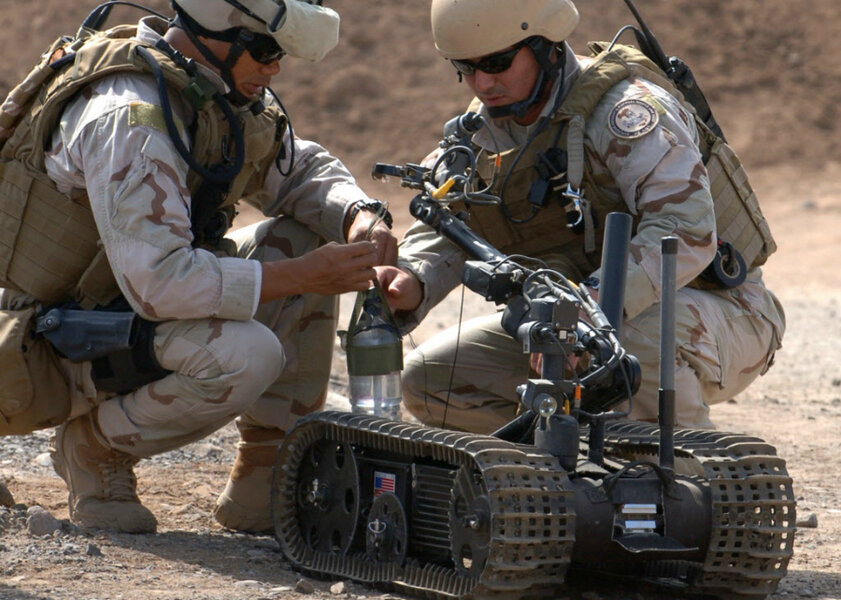US military raises the stakes for Spot the robotic dog
Loading...
The US Marines Corps has been conducting training exercises alongside Spot, a 160-pound robotic dog.
The training took place at the Marine Corps Warfighting Laboratory, formed in the 1990s to investigate novel technologies with the potential to work alongside military personnel and influence how future operations are conducted.
Called the quadruped prototype robot, Spot is run by a system of hydraulics and powered by electricity. The robot was created by the Google-owned company Boston Dynamics.
US Marine Capt. James Pineiro, a branch head at the laboratory, said Spot’s dexterity was tested in the hills, woodlands, and urban areas of Virginia.
During the weeklong military training session held in September, Spot was also dispatched into buildings before Marines entered to survey possible threats.
In the future he may be used for similar “scouting exercises” and “load carriage” missions, search and rescue operations, and charting enemy territory, said Ben Swilling, a robotic specialist with the company that made Spot.
The marines can control Spot from roughly a quarter-mile away with radio signals sent from a laptop and navigated by a device similar to a video game controller. The robot had been tested indoors, but researchers wanted to survey its abilities on harsher terrains.
Google has poured millions into the development of robotics, purchasing Boston Dynamics in 2013. Spot was the successor to BigDog, an earlier concept weighing in at 240 pounds, and another prototype called LS3.
Boston Dynamics began as a byproduct of the Massachusetts Institute of Technology in 1992 when a team of engineers and scientists started developing robots that behave like animals. It has produced nine prototypes so far, according to the company’s website.
Pineiro said Spot, first made public in February, is a lighter and mobile version able to outpace the LS3.
“It’s actually very easy to operate the robots,” he said. “We have had people as young as four run the robot around.”
Spot will not see combat duties anytime soon, however, though the mechanical dog has exceeded expectations and may be a precursor to the integration of such devices into infantry units.
Pineiro said the military is open to new technology, while it continues to invest in research of development for robotics in a push to make them entirely autonomous. He believes robots would reduce dangers for marines.
“Robots can’t get shot and they can’t die,” said Ben Swilling, a robotics expert with Boston Dynamics. “If you need to send someone into danger’s way you don’t want anyone to get hurt.”
While an official timetable for robotic soldiers has not been actuated advancements in robotics continue to gain steam.
Researchers from Switzerland and Italy are developing algorithms that may make robot dogs of the future able to traverse disaster zones too forbidding for humans. One such prototype called HyQ is in development.
“This is a key characteristic of this robot here to perform and withstand impacts that are intrinsic to walking and trotting motions,” one researcher told Reuters.







